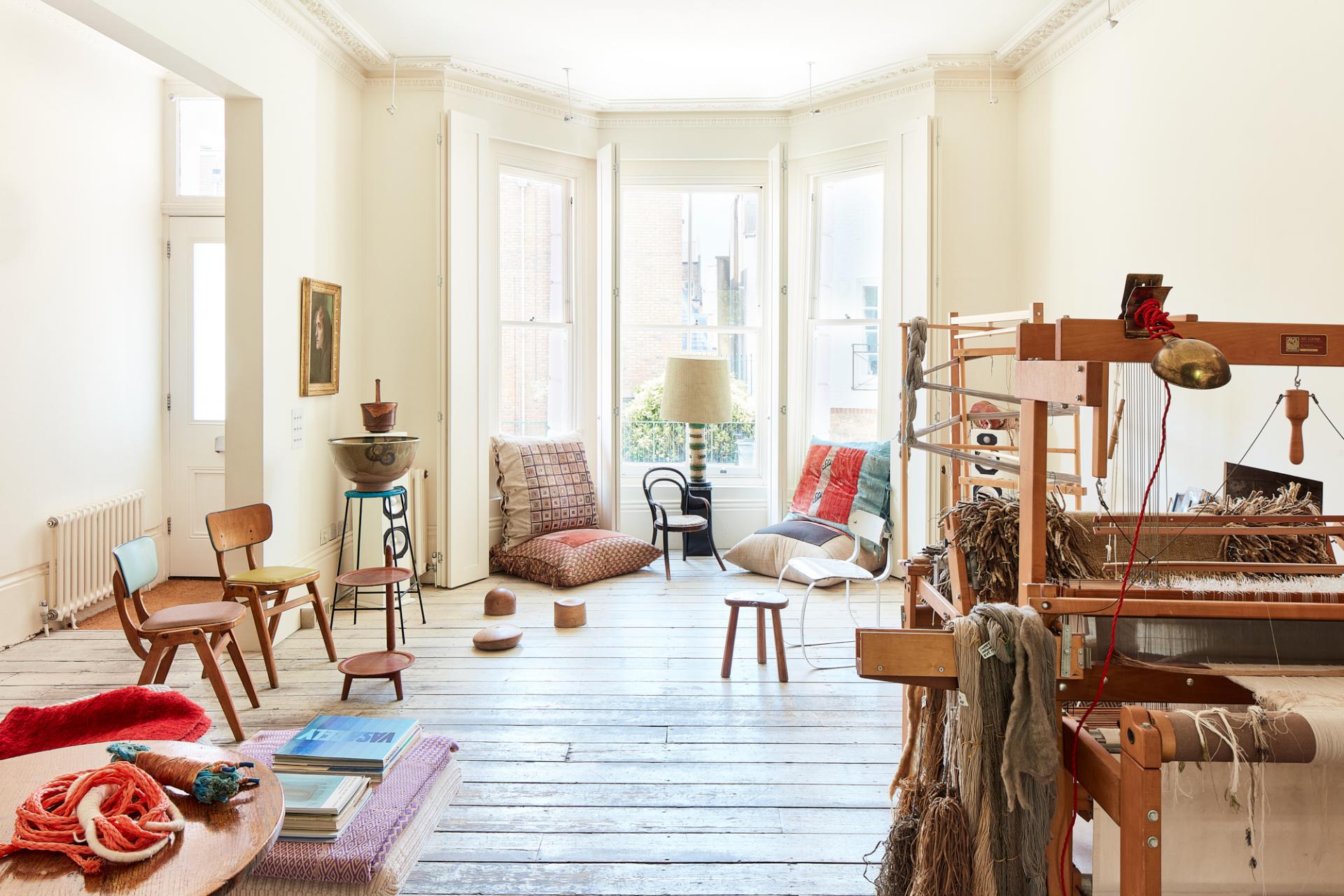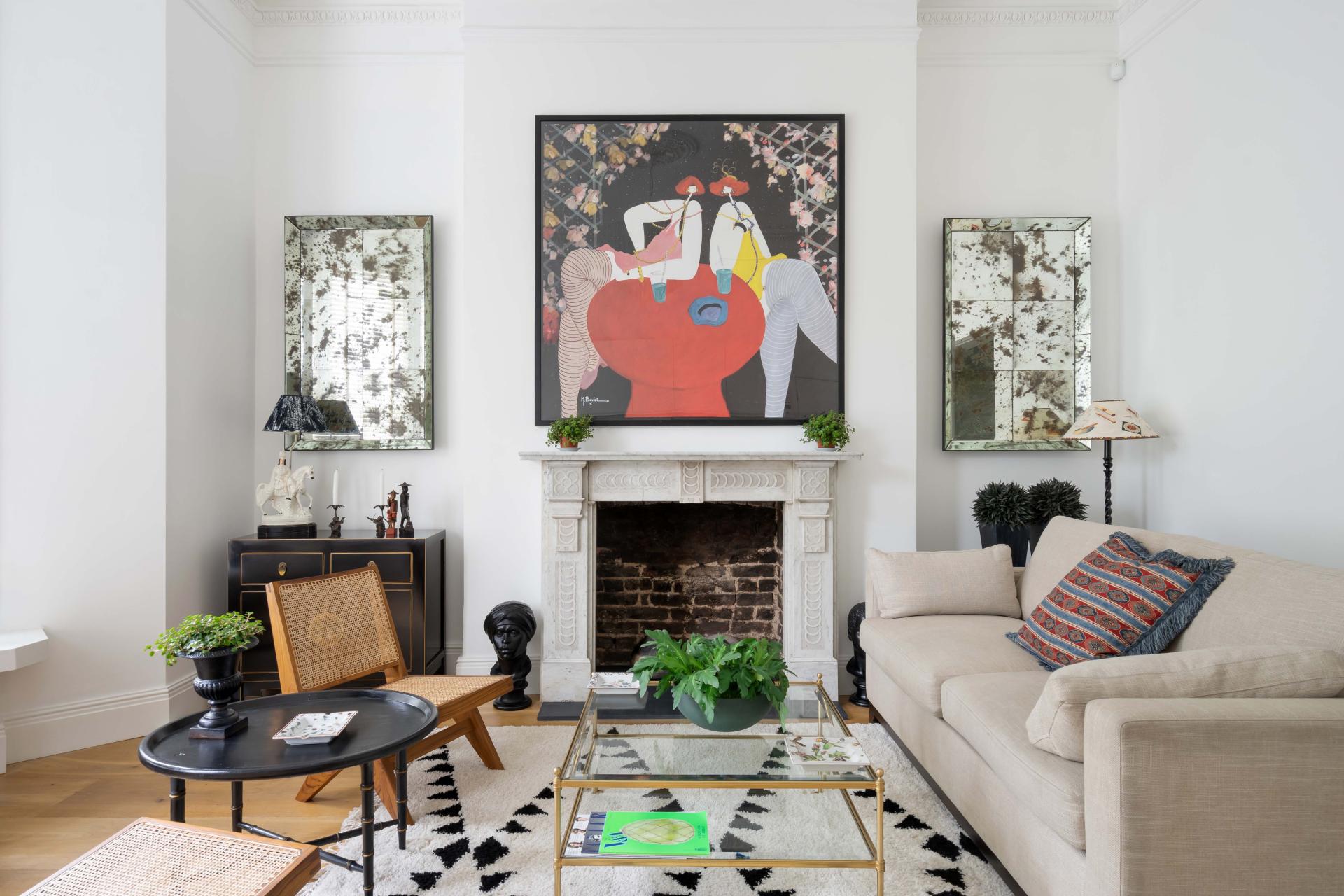

Designer, creator and maker Teresa Hastings on why space and light guided the renovation of her short-stay maisonette in Notting Hill
Designer, creator and maker Teresa Hastings on why space and light guided the renovation of her short-stay maisonette in Notting Hill
Space and light: potentially two of the most cited principles in the interior design vernacular. And yet, how often do you encounter an environment that really epitomises both?
Enter Colville Houses.
There’s a feeling of openness at this two-bedroom maisonette that’s apparent as soon as you step over the threshold. With walls and doors removed, the view from one side of the house to the other is completely unobstructed. The ceilings are soaring, the cornicing is intricate, and the windows are full-height sashes. You’d assume that all these period details have always been here, but in fact, most have been restored by owner Teresa Hastings.
“When I bought the flat nearly 30 years ago, they’d been a fire, so false ceilings had been put up,” she explains. In the year of renovation works that followed, Teresa set about reinstating the period bones of the property, taking casts of the cornicing from the apartment upstairs. “I wanted there to be a sense of flow; to be able to come in and have as few doors as possible and for the light to be able to move freely around the space,” she says.
 |
 |
Almost three decades on, the maisonette is a peaceful home – surprising perhaps since it sits a stone’s throw from the bustle of Portobello Road – and a backdrop to Teresa’s creative endeavours.
Having studied weaving at Central Saint Martins, Teresa worked for the legendary weaver and textile designer Jack Lenor Larsen in New York, before becoming an interior designer. She recently returned to her weaving roots and has set up an initiative in the Indian Himalayas, where she works with local people to create completely natural textiles and tapestries.
As you might expect, the tools of her trade can be found all over the house – the working American floor loom is an apt focal point in the living room. Teresa’s textiles, naturally dyed from the likes of sweet chestnuts and lichen collected from nearby Hyde Park are also scattered around, along with other textiles she has collected over the years. Large floor cushions propped up near the huge windows are covered in 17th-century linen that was once a nun’s wimple. “You can notice these beautiful marks all over,” Teresa says, tracing the history.
Those who appreciate a simple way of living will feel instantly at home here. With minimal furniture, the living space lends itself to practising yoga, reading, or quiet contemplation. “It’s a choice,” explains Teresa. “I’d rather be able to sit and appreciate that feeling of space. People don’t always have that in London.”
 |
 |
Certainly, rather than “collecting big labels or names”, all the objects found throughout have been “gathered” over time, either given by friends, like antiques dealer and furniture designer Christopher Howe, or sourced from markets.
Speaking of which, having Portobello Road Market on the doorstep has always been a huge draw for Teresa. “There’s a real sense of community here,” she says. “I buy all my food from the Farmers’ Market on a Saturday, and everyone knows everyone.”
It’s also a great area for exploring on foot, she adds. “The architecture is beautiful and you’re so near to Holland Park and Hyde Park. From there you can cut across to Mayfair and go to the galleries on Cork Street or Savile Row.”
Much like those famous London locales, craftsmanship is something that underscores Teresa’s design ethos. An antidote to the generic and prefabricated, her work – and her interiors – celebrate “the touch of hands”.

“Everything I do is made by hand using traditional methods to create something quite minimal and modern,” she explains. Her weaving initiative in India for example uses wool bought directly from shepherds and washed and processed in a time-honoured way in the Ganga river, before being dyed with leaves, roots and flowers on open wood fires – a process that is very dependent on the weather.
“The process is as important as the end result,” she says. “People are very focused on the end result of design but don’t think about the process or the hand that touched it; what went into the making of it.”
And if there’s any home where the touch of its maker is clearly apparent, it’s Colville Houses.













